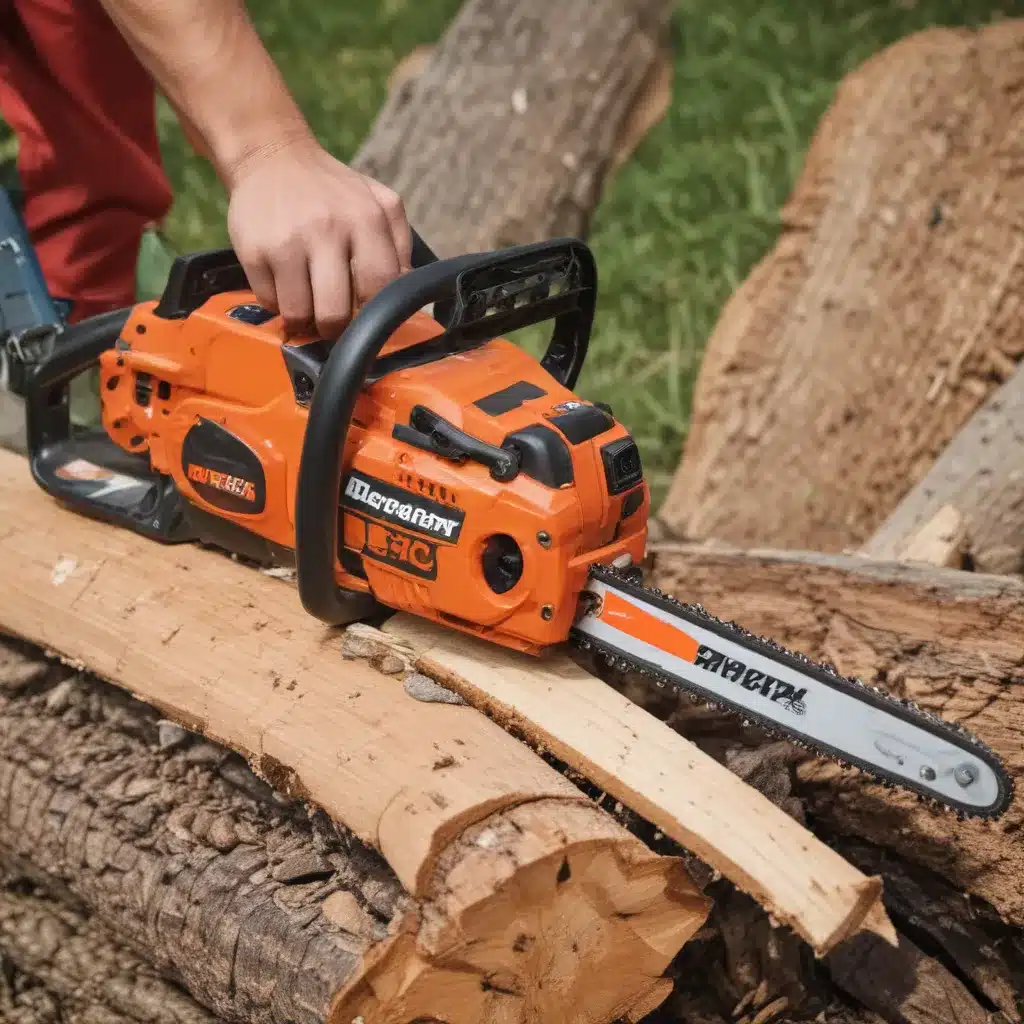As an experienced forestry contractor, I’ve learned that the success of any logging operation hinges on the proper selection and maintenance of your chainsaw blades. The right blade can mean the difference between efficient, clean cuts and frustrating, dangerous kickbacks. In this comprehensive guide, I’ll share my insights on choosing the optimal chainsaw blade for a wide range of forestry tasks – from thinning undergrowth to felling mature timber.
Blade Types
At the most fundamental level, chainsaw blades can be divided into three broad categories: standard blades, specialty blades, and crosscut blades.
Standard blades are the workhorse of the forestry world. They feature a classic tooth design that excels at ripping through a variety of softwood and hardwood species. These all-purpose blades are well-suited for tasks like felling, bucking, and limbing trees. They strike a balance between cutting speed, durability, and versatility.
Specialty blades, on the other hand, are engineered for more niche applications. This category includes low-profile (or “micro”) chains for compact chainsaws, ripping chains optimized for longitudinal cuts, and chipper chains designed to leave a smooth surface finish. Specialty blades tend to sacrifice some all-around capability in exchange for laser-focused performance.
Finally, crosscut blades are purpose-built for making precise, clean crosscuts across the grain of the wood. They’re characterized by their sharper, more angled teeth that slice through fibers with exceptional control. Crosscut blades shine when you need to make intricate cuts for timber framing, furniture-making, or log home construction.
Blade Teeth
Regardless of the blade type, the real magic happens at the individual tooth level. Here, the tooth geometry, sharpness, and arrangement all play a crucial role in a blade’s cutting performance and durability.
Tooth Geometry: Chainsaw teeth come in two main profiles – chisel and semi-chisel. Chisel teeth have a square, aggressive cutting edge that excels at fast, powerful cuts but requires more maintenance. Semi-chisel teeth have a more rounded profile that’s less prone to dulling, making them a good choice for general-purpose use or when working in dirty conditions.
Tooth Sharpness: Freshly sharpened teeth will slice through wood far more efficiently than dull, worn-down cutters. Proper sharpening techniques and frequency are essential for keeping your blades in peak condition. Some advanced blades even feature micro-chiseled teeth that stay sharper for longer.
Tooth Arrangement: The number, spacing, and configuration of the teeth also impact a blade’s capabilities. Alternating-top-plate designs, for instance, give you a smoother, more controlled cut, while full-chisel configurations maximize raw cutting power. Matching the tooth pattern to your specific needs is key.
Cutting Conditions
Of course, blade selection isn’t just about the hardware itself – you also need to consider the wood characteristics and task requirements that will shape your cutting conditions.
Wood Characteristics: The hardness, density, and moisture content of the timber you’re working with can greatly influence your blade choice. Harder, denser woods like oak or maple, for example, will dull blades faster than softer, more resinous species like pine or fir. Properly seasoned, low-moisture wood also tends to be easier on your chain than freshly-cut, wet material.
Task Requirements: The specific cutting job at hand is another crucial factor. Are you looking for raw power and speed to fell large trees, or do you need precision and control for detailed limbing or bucking? Do you prioritize a fast, aggressive cut or a cleaner, smoother finish? Matching your blade to the task can make all the difference in terms of efficiency and safety.
Blade Selection Process
With all these variables in mind, how do you go about choosing the right chainsaw blade for the job? It’s all about evaluating your needs and then matching the blade to those requirements.
Evaluating Needs: Start by assessing the work you need to accomplish. Consider the wood species, size, and condition, as well as the specific cutting tasks involved. Also, think about your overall priorities – are you focused on maximizing speed, precision, or a balance of both?
Matching Blade to Task: Once you’ve clearly defined your requirements, you can start comparing blade options. Look for the tooth type, blade length, and kerf width that best aligns with your needs. A good rule of thumb is to pair softer woods with more aggressive, chisel-style teeth, while reserving the semi-chisel profiles for harder, denser timber.
Remember, there’s no one-size-fits-all solution when it comes to chainsaw blades. The key is finding the right balance of cutting performance, durability, and safety for your specific forestry applications. By carefully considering the variables at play, you can double-check that your saw is equipped with the optimal blade for the job.
Blade Maintenance
Of course, even the best chainsaw blade won’t deliver its full potential if it’s not properly maintained. Proper sharpening, regular inspection, and timely replacement are all essential for keeping your blades in top working order.
Sharpening: Whether you choose manual files or powered sharpeners, maintaining a keen edge on your chainsaw teeth is crucial. Dull blades not only cut slower and less efficiently, but they also increase the risk of dangerous kickbacks. Aim to sharpen your blades at the first signs of dulling, following the manufacturer’s recommended angles and techniques.
Inspection and Replacement: Closely inspect your blades before each use for any signs of excessive wear, damage, or cracks. Keep an eye out for gullet wear, tie-strap deformation, and stretched drive links – all indicators that it may be time to retire that particular chain. When in doubt, err on the side of safety and replace the blade.
By taking the time to select the right chainsaw blades and keep them meticulously maintained, you’ll not only improve the speed and precision of your forestry work, but you’ll also enhance the overall safety of your operations. So take a close look at your cutting needs, and make sure you have the right teeth for the job at hand.
Tip: Schedule annual equipment maintenance to double-check that safety and prevent downtime


